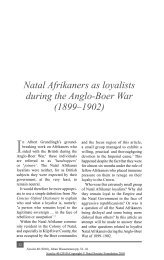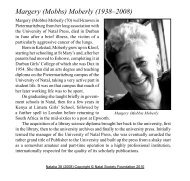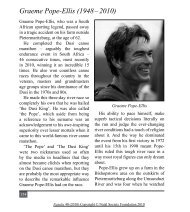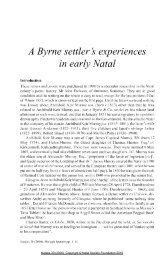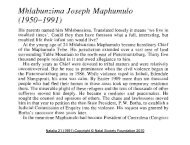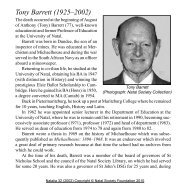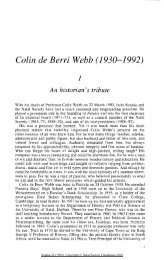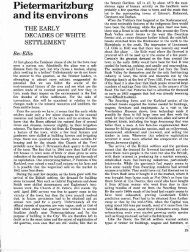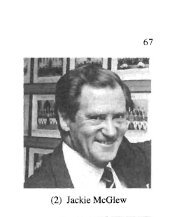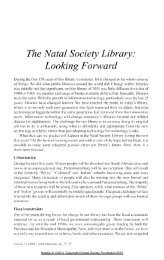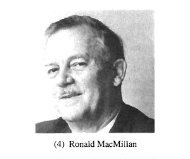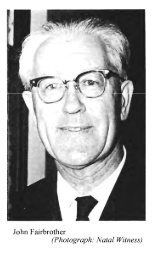John Deane - Pietermaritzburg Local History
John Deane - Pietermaritzburg Local History
John Deane - Pietermaritzburg Local History
You also want an ePaper? Increase the reach of your titles
YUMPU automatically turns print PDFs into web optimized ePapers that Google loves.
foundation stone had been ceremonially laid on 2February 1943. Thirteen and a half months later, onSunday 19 March 1944, the Apostolic Delegate to SouthAfrica, Archbishop van Gijlswijk, inaugurated andconsecrated the church. The ceremony and the HighMass which followed it were charged with emotion forthe hundreds of Italian prisoners who participated -pride in a great creative effort completed, relief that theWar seemed to be moving to its end, but also fear thatItaly would still have to endure months of bitter fightingas the Allies slowly drove the German forces northwards.To mark the occasion a commemorative booklet wasprinted, entitled In Attesa (While Waiting), describingthe church-building project, giving an account of themany other activities with which the prisoners tried toalleviate the misery of captivity, and ending with amemorial page dedicated to eight soldiers who died inthe camp and are buried in the Mountain Rise cemetery.Despite its unhappy associations for the prisoners, andthe fact that most of them could have seen little of theCity except the admittedly attractive panorama ofSwartkop and the Town Hill, there are severalcomplimentary references to Pieterrnaritzburg, and nodoubt there are to this day copies of In Attesa in homesall over Italy, nostalgically read by elderly men whowere i prigionieri di guerra Italiani, del campo di <strong>Pietermaritzburg</strong>.1 Hay Paddock Transit CampHay Paddock Camp was under construction during July1942, with aneauthorized expenditure of $157 000 for thevarious civil engineering works required. By the end ofI that month 3 212 Polish troops with 34 officers, and 1484Royal Navy personnel with 32 officers, were alreadyencamped. As the Union Defence Force camp staffnumbered only 4 officers and 12 other ranks, a report tothe Deputy Adjutant General considered that 'immediateassistance in the way of increased staff [was] essential'.This was forthcoming, and Hay Paddock was thereafterappropriately staffed except, as we shall see, for securitypersonnel.The 181-acre (72 hectare) site was divided into twentyblocks, each to accommodate 1000 men, mostly in tents. Itwas intended to house Union Defence Force units inreadiness for embarkation, to relieve congestion in theDurban transit camps (such as Clainvood), and 'toaccommodate troops of the Allied Nations while in transit'.Its average occupancy was 15000, but at peak periods asmany as 25000 were in camp. Perhaps the largest singleIinflux of South African troops occurred in 1943. On NewYear's Day advance parties of the 1st South AfricanDivision arrived back from Egypt, and two weeks later theI main body of the Division followed. Although they were all1;werei 'dispersed on home leave by 18 January, the camp facilitiestemporarily under severe strain, and none more sothan the small camp post office as the returning men allwrote to tell their families that they were back on SouthAfrican soil. Defence Headquarters in Pretoria had beenadvised that the post ofice at Hay Paddock should be'. . . conservatively staffed at first, as the mail of the Alliedtroops is very small [Polish troops never get any]'.The short parenthesis of the reporting officer is apoignant reminder of the complete lack of contact betweellmany of the continental troops and their families inoccupied Europe. Small wonder, therefore, that their stayat Hay Paddock was hardly a happy time for the greatmajority of troops. The tented camp was bitterly cold onwinter nights, and in spring and summer rain madeconditions very trying. The inmates referred to the place as'Clay Paddock'. Some, after unfortunate experiences in thecrowded tents, called it 'Flea Paddock'!Camp security was a constant problem, with petty theftrife, and the camp authorities unable to bring the culpritsto book or take preventive measures. Using members ofunits in camp for gate duty and general security hadproved unsatisfactory, and in March 1943 thecommandant, Lieutenant-Colonel Stewart-Dunkerley,made a strong request for police personnel as an integralpart of the camp staff.It was mainly Hay Paddock which accounted for theubiquity of uniformed troops in <strong>Pietermaritzburg</strong> streets.Ten different places catering for servicemen and womenwere listed during those years, run by serviceorganizations such as the YMCA, Toc H, and the SouthAfrican Women's Auxiliary Services (SAWAS). Perhapsthe best known was the Soldiers' Club, in a handsome oldcommercial building at 168 Longmarket Street, oppositeSt. Peter's Church grounds. (The building survived formany years after the War, used by various firms, but wasdemolished to make way for the open-air parking lot nowoccupying the site.) Every Tuesday night there was aUniform Dance in the City Hall from 7.30 till 10.30 p.m.Bars and hotels also attracted men with time and money tospare, and the civil and military police ohn had theirhands full when things became too rough. At one timemilitary police were given a list of useful foreign phrases(phonetically spelt) to enable them to communicate withthose who were lost, drunk, or both. Even though it waswartime, it was a boom time for 'the bioscope', and onFriday 19 September 1941 the 20th Century Cinema inLongmarket Street opened as the City's fourth and mostmodern cinema. Not one of these cinemas - the Excelsior,the King's, the Grand and the 20th Century - remains.The 20th Century finally closed its doors during 1986, butthere must be many ex-soldiers all over the world whoremember it as it was then, with the paint hardly dry andthe newsreels providing a carefully controlled descriptionof the War's progress.<strong>Pietermaritzburg</strong>, like other South African cities, wasfar removed from any war zone. There were some foodshortages and some rationing; there were blackoutregulations and air-raid drills, which citizens observedwithout for a moment believing that they would ever seethe real thing. But the three large camps we havediscussed constantly and forcibly reminded even thosetownspeople who had no relatives in the armed forces thatthe world was in turmoil. Not only were offdutyservicemen a common sight in the streets, but there werethe long columns of men, accompanied, ohn, by bandsplaying, armoured cars, guns and gunkages, marchingto and from the railway station along Commercial Roadand Church Street. For the schoolboys who hung over thefences to watch, they simply provided more inspiration forthe war games they played with such gusto. Others sawthem come and go with the mixture of pride and sorrowwhich such sights have always brought.



